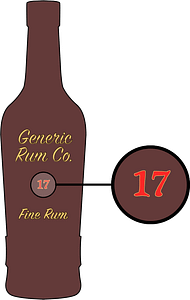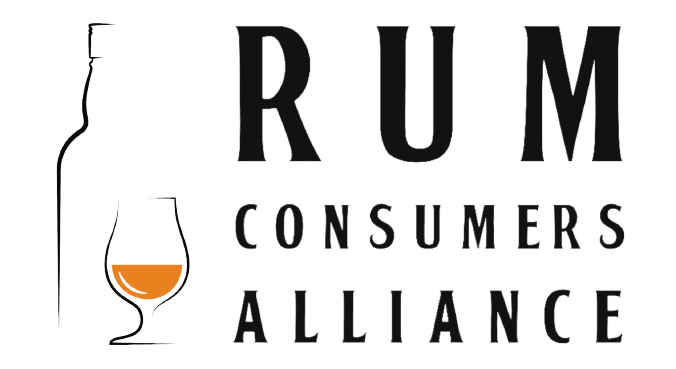One of the biggest surprises for consumers interested in diving into the rum category is a lack of transparency from many of the most widely available and popular brands. It’s all too easy to purchase a bottle of rum that:
- contains added ingredients not disclosed on the label (and/or marketing materials),
- misleads them about the rum’s age, or
- misleads them about the rum’s origin.
Our goal is to be a resource that helps consumers navigate these issues, while also advocating for increased transparency in rum.
By “rum,” we are not referring to products like flavored rum and spiced rum. Additives are inherent in those categories, and we view them as separate from rum.
Undisclosed Additives in Rum
Rules for what can and cannot be added to rum vary from country to country. For example, Jamaica only allows coloring matter and water to be added to rum. However, large markets like the United States and European Union do allow for other additives.
In the United States, rum can include up to 2.5% (by volume) of “coloring, flavoring, or blending materials” without changing its designation to something other than “rum.” This may include sweeteners like sugar.
In the European Union, up to 20 grams per liter (GpL) of sweeteners can be added to rum.
On the other hand, flavoring cannot be added to rum without designating it as a “rum-based spirit drink.”
These additives are not required to be disclosed on the bottle. Naturally, this leads to confusion for many rum consumers. Without disclosures, it’s easy to unintentionally buy a rum that has been sweetened or flavored in some way.
For example, Jamaican rum can be bought in bulk from a Jamaican distillery, sweetened, then later sold as a “Jamaican rum” in markets like the US or European Union. Jamaica’s regulations only have effect for rum sold within its borders. Even though Jamaica does not allow sweetening, it’s possible to find sweetened Jamaican rum outside of Jamaica.
In recent years, rum enthusiasts have tried to identify rums with additives by measuring them with a hydrometer (a device for measuring alcohol by volume). If a spirit’s strength (ABV) as measured by a hydrometer differs from the label-stated ABV, it suggests something other than water or spirit caramel (for color correction) has been added to the rum. Several lists of hydrometer measurements are available online:
Disclaimer: These tests are estimates. Laboratory tests may yield different results.
The Finnish government specifically tests spirits for added sugar and publishes the results on their website. Sweden does as well. Rum Revelations compiles the findings from both governments here:
Age Statements in Rum
Much like rules regarding additives, age statement rules vary from country to country as well. In the United States and European Union, age statements must reflect the age of the youngest rum in the bottle. If a bottle contains 100% 10-year-old rum, an age statement must reflect that it is 10 years old. If a bottle contains 80% 10-year-old rum and 20% 5-year-old rum, an age statement must reflect that it is 5 years old. Some blended rums may list an age range, e.g., “a blend of aged rums between 5 to 10 years old” but are not required to disclose the percentages of each.
There are certain countries that allow age statements based on weighted averages.
The most confusing issue for many rum consumers lies in prominent numbers that are mistaken for age statements on labels. For example, imagine a bottle containing a blend of rums aged between 5 and 17 years that prominently features the number 17, but does not actually say “aged 17 years”. It’s very easy for consumers to infer the rum is 17 years old even though the label technically doesn’t make such a claim.

Our Goals
Consumers should be able to reasonably understand what is in a rum bottle before they buy it. We believe transparency in labeling and easily accessible public information are the best ways to accomplish this.
Transparency isn’t all or nothing. It has degrees. While many rum enthusiasts enjoy learning every detail about a rum, asking producers to cram their labels with details such as ester counts and fermentation lengths risks missing the forest for the trees.
The most difficult task for rum consumers today is answering one simple question: is there anything in this rum the bottle isn’t telling me about?
That’s why we believe a reasonable standard of transparency in labeling is as follows:
- Additives must be disclosed. Anything beyond small amounts of caramel for color consistency are considered additives. The type of additive and amount should be disclosed on the label.
- Labels should not imply age outside of true minimum age statements. While this standard is somewhat subjective, we have provided examples for clarity.
Achieving this for all rums will require change at various government levels, continued educational efforts, and by holding brands accountable through our purchasing habits. This will take time.
In the meantime we have also created robust requirements that will be used for barrel picks made by RCA member rum clubs. We also welcome any brands that wish to adopt these standards for their own labels.
Since the audience for barrel pick releases selected by RCA member rum clubs generally have more rum knowledge than the average consumer, we seek to include additional information beyond just additives and true minimum age statements. These labels will feature the following information:
- Country or Countries of Distillation
- Include distillery name or location when possible.
- Source Material
- Molasses, sugarcane juice, etc.
- Age Statement
- An age statement, if provided, must reflect the youngest rum in the bottle.
- For blends, information on the range of ages when known (for example, “a blend of rums aged 7-12 years).
- Type of Still(s)
- This can be as detailed as the producer would like, but at a minimum should specify column, pot, hybrid, etc.
- Cooperage
- Type of barrel(s) in which the rum aged
- Location of aging
- If aged in more than one location, all should be stated.
- Country or region is preferred, rather than terms like “Continental” or “Tropical.”
- Additives
- If the rum contains post-distillation additives, the additives must be stated. This includes sweeteners (which should be listed in g/l) or any other ingredients (for example, macerated fruits, flavors, etc.) with the exception of water.
- Spirit caramel added for color consistency (such as E150A) does not need to be declared.
For future updates around transparency advocacy, subscribe to the RCA blog.

